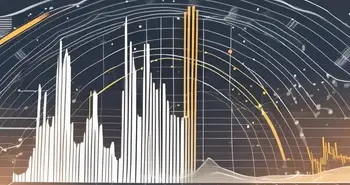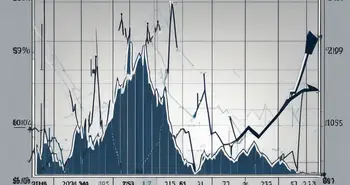Mastering Gamma Hedging: Strategies for Options Traders

I've been trading options for years, and let me tell you, mastering gamma hedging can be a game-changer. Gamma hedging is a powerful strategy that allows traders to manage and mitigate risk while maximizing potential returns. In this article, I will guide you through the ins and outs of gamma hedging, from understanding the basics to implementing advanced techniques. Get ready to take your options trading to the next level!
Understanding the Basics of Gamma Hedging
What is Gamma Hedging?
Gamma hedging is a technique used to minimize the impact of changes in an option's delta—its sensitivity to shifts in the underlying asset's price. By neutralizing delta, traders can effectively eliminate their exposure to price movements and focus on profiting from other factors.
Importance of Gamma in Options Trading
Gamma is a crucial component of options trading because it measures how fast an option's delta changes as the underlying asset's price fluctuates. Higher gamma means the option's delta is more sensitive to price movements, while lower gamma indicates less sensitivity. Understanding and managing gamma is essential for successfully navigating the options market.
Key Terms to Know in Gamma Hedging
Before plunging into gamma hedging, let's go over a few key terms:
- Delta: Measures the rate of change of an option's price relative to changes in the underlying asset's price.
- Gamma: Measures how fast an option's delta changes with respect to the underlying asset's price.
- Volatility: Determines the magnitude of price swings in the underlying asset. Higher volatility amplifies gamma and thus increases both profit potential and risk.
- Time decay: Refers to the erosion of an option's value as time passes. Gamma hedging can help offset the impact of time decay.
Now that we have covered the key terms, let's delve deeper into the concept of volatility and its relationship with gamma hedging. Volatility plays a significant role in options trading as it directly affects the price swings of the underlying asset. When volatility is high, the gamma of an option increases, making it more sensitive to price movements. This heightened sensitivity can lead to both higher profit potential and increased risk.
Traders must carefully analyze and assess the volatility of the underlying asset before implementing gamma hedging strategies. By understanding the historical volatility patterns and market conditions, traders can make informed decisions on when and how to adjust their delta positions to effectively hedge against price fluctuations.
Another important aspect to consider in gamma hedging is the impact of time decay. As options approach their expiration date, their value tends to decrease due to time decay. Gamma hedging can help offset this erosion of value by adjusting the delta positions accordingly. By actively managing the gamma exposure, traders can mitigate the negative effects of time decay and potentially enhance their overall profitability.
The Mechanics of Gamma Hedging
How Gamma Hedging Works
Gamma hedging involves continuously adjusting your options portfolio to maintain a neutral gamma position. This requires rebalancing your delta as the underlying asset's price changes. By doing so, you lock in profits and mitigate losses, regardless of the asset's direction. It's like having your own risk management mechanism built into your trading strategies.
One key aspect of gamma hedging is the concept of dynamic hedging, where traders make frequent adjustments to their positions based on market movements. This dynamic approach allows traders to adapt quickly to changing market conditions and optimize their risk exposure.
The Role of Delta in Gamma Hedging
Delta is the driving force behind gamma hedging. As the underlying asset's price moves up or down, the delta of an option changes. Gamma hedging aims to keep the overall delta near zero, allowing traders to profit from other factors such as time decay and changes in volatility.
It's important to note that delta is not a constant value and can fluctuate based on various factors, including changes in the underlying asset's price and time decay. Traders must monitor these changes closely to effectively manage their gamma hedging strategies.
Understanding the Gamma-Delta Relationship
The relationship between gamma and delta is critical to successful gamma hedging. Gamma measures how fast delta changes, so a higher gamma translates to a steeper slope for delta. As a trader, you need to carefully manage this relationship to control your overall risk exposure and take advantage of market opportunities.
By maintaining a balanced gamma-delta relationship, traders can enhance their risk management strategies and optimize their options trading performance. This intricate interplay between gamma and delta forms the foundation of effective gamma hedging techniques in the dynamic world of options trading.
Implementing Gamma Hedging Strategies
Steps to Create a Gamma Hedging Strategy
Developing a robust gamma hedging strategy requires careful planning and execution. Here are the steps to get you started:
- Analyze your options portfolio and identify assets where gamma hedging can be beneficial.
- Calculate the delta and gamma of the options you hold.
- Monitor the underlying asset's price movements and adjust your options positions accordingly.
- Regularly assess the effectiveness of your gamma hedging strategy and make necessary modifications.
Gamma hedging involves dynamically managing the options in your portfolio to offset changes in the underlying asset's price. By understanding the relationship between delta and gamma, you can fine-tune your hedging strategy to maintain a balanced risk exposure.
Adjusting Your Portfolio for Gamma Hedging
Gamma hedging is an ongoing process that demands constant monitoring and adjustment. When rebalancing your portfolio, you'll be buying and selling options to maintain a neutral gamma position. This dynamic nature of gamma hedging ensures you're always ready to navigate changing market conditions.
Furthermore, incorporating advanced option strategies like straddles or strangles can enhance your gamma hedging approach by providing additional flexibility in responding to market volatility. These strategies allow you to profit from significant price movements while still managing your gamma exposure effectively.
Risk Management in Gamma Hedging
While gamma hedging is an effective risk management tool, it's essential to be aware of its limitations. Keep the following points in mind:
- Gamma hedging cannot eliminate all risks; it only aims to mitigate those associated with price movements.
- Be mindful of transaction costs when frequently adjusting your options positions.
- Understand that gamma hedging requires discipline and the ability to act swiftly in response to market changes.
Additionally, integrating other risk management techniques such as diversification across asset classes and using stop-loss orders can complement your gamma hedging strategy. By combining multiple risk mitigation approaches, you can build a more resilient portfolio that can withstand various market scenarios.
Advanced Gamma Hedging Techniques
Exploring Gamma Scalping
Gamma scalping is an advanced gamma hedging technique. It involves taking advantage of short-term deviations in the underlying asset's price by trading options positions with high gamma sensitivity. This technique requires precise timing and an in-depth understanding of market dynamics.
The Impact of Volatility on Gamma Hedging
Volatility plays a significant role in gamma hedging. Higher volatility leads to larger delta swings, increasing both profit potential and risk. Traders need to factor in volatility when adjusting their positions, as it directly affects gamma and, consequently, overall portfolio performance.
Time Decay and Its Effect on Gamma Hedging
Time decay can erode the value of options over time, affecting both delta and gamma. Gamma hedging provides a means to offset time decay, helping traders maintain profitability even when the underlying asset's price remains relatively stable.
My Personal Advice: One valuable lesson I've learned through my experience with gamma hedging is the importance of staying on top of the market. This strategy requires active management and quick decision-making. Remember that gamma hedging is not a set-it-and-forget-it approach but rather an ever-evolving practice that demands ongoing attention and analysis.
FAQ
What is gamma hedging?
Gamma hedging is a technique that allows options traders to neutralize the delta risk of their positions by continuously adjusting their options portfolio.
Why is gamma important in options trading?
Gamma measures how fast an option's delta changes with respect to the underlying price. Understanding and managing gamma is crucial for managing risk and maximizing trading opportunities.
How do I implement a gamma hedging strategy?
To implement a gamma hedging strategy, analyze your options portfolio, calculate delta and gamma, monitor price movements, and adjust positions to maintain a neutral gamma position.
What are the risks of gamma hedging?
Gamma hedging cannot eliminate all risks, and frequent adjustments may incur transaction costs. It requires discipline and the ability to act swiftly in response to market changes.
What are advanced gamma hedging techniques?
Advanced gamma hedging techniques include gamma scalping, which involves taking advantage of short-term price deviations, and adjusting positions based on volatility and time decay.
I hope this comprehensive guide has given you a solid foundation in mastering gamma hedging. Remember, practice makes perfect. With time and experience, you'll become adept at utilizing gamma hedging to enhance your options trading strategies. Good luck on your trading journey!
Ready to apply your newfound knowledge of gamma hedging in a real-world setting? Look no further than Morpher, the revolutionary trading platform that's changing the game with blockchain technology. With Morpher, you can seamlessly trade across a multitude of asset classes, including stocks, cryptocurrencies, and more, all with zero fees and infinite liquidity. Embrace the power of fractional investing, short selling, and up to 10x leverage to enhance your trading strategies. Plus, with the Morpher Wallet, your funds and keys remain under your control. Experience a unique trading environment with Virtual Futures and other innovative instruments. Sign Up and Get Your Free Sign Up Bonus today to start trading on a platform that's as dynamic and forward-thinking as your approach to options trading.

Disclaimer: All investments involve risk, and the past performance of a security, industry, sector, market, financial product, trading strategy, or individual’s trading does not guarantee future results or returns. Investors are fully responsible for any investment decisions they make. Such decisions should be based solely on an evaluation of their financial circumstances, investment objectives, risk tolerance, and liquidity needs. This post does not constitute investment advice.

Painless trading for everyone
Hundreds of markets all in one place - Apple, Bitcoin, Gold, Watches, NFTs, Sneakers and so much more.

Painless trading for everyone
Hundreds of markets all in one place - Apple, Bitcoin, Gold, Watches, NFTs, Sneakers and so much more.









